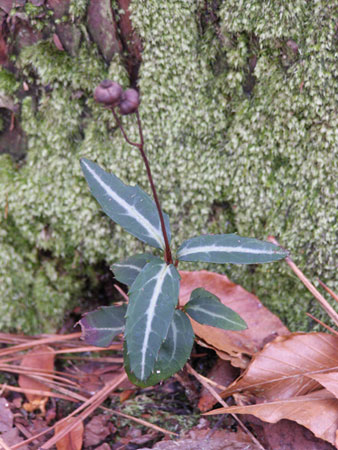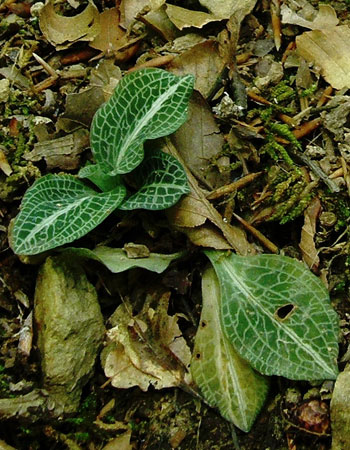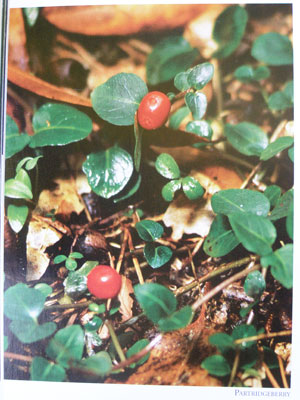What is wintergreen?
By Ken Moore
Flora Columnist
The most obvious evergreen features of the winter forest floor are numerous extensive carpets of Christmas ferns, Polystichum acrostichoides (see Flora, “Christmas fernsâ€). Such fern carpets indicate a bit more moisture close to the soil surface than occurring in the surrounding terrain. I also admire single specimens and small clumps of ferns here and there and can’t help but wonder how many years will pass before they become impressive spreads.
Less obvious, but notable to the observant eye, are at least five small evergreen plants that are easy to identify during the winter. Several of them in the past have been called wintergreen. Some years ago when assisting Betsy Green Moyer with Paul Green’s Plant Book, I was puzzled for days trying to discern exactly which botanical species were being described as “wintergreen†by old-timers who collected them for herbal medicines.
I finally decided to limit “wintergreen†to Gautheria procumbens, which in Bell and Lindsey’s Wild Flowers of North Carolina is also called checkerberry and teaberry. A common plant of northern states and our mountain counties, this wintergreen is seldom seen down here in our Piedmont.
Become familiar with the four common evergreen wildflowers pictured here by name and you can impress your woods-walking companions.
The most frequently found is Chimaphila maculata, spotted or striped wintergreen, sometimes called pipsissewa. Pipsissewa means “to make water†and was used as an herbal diuretic. You can use whatever name you like. Return in mid-May to June to catch it in flower.
You could confuse the white-striped leaves of rattlesnake plantain, Goodyera pubescens, with the spotted wintergreen if you did not make note that Goodyera’s striped leaves remain as a rosette flat on the ground, not along a short upright stem as on Chimaphila. Return in June to July to see this terrestrial orchid in flower.
Locally there are three similar evergreen plants called wild ginger or heartleaf. Don’t fret about which species of Hexastylis you are seeing. All three have distinctively heart-shaped leaves and show varying degrees of light and dark variegation. Return in early mid-spring to discover the leathery flowers hidden beneath the leaf litter.
You’ll find partridge berry, Mitchella repens, either as a few sparse prostrate opposite leafy stems or as vigorous mats scattered throughout deciduous and piney forests. The red berries resulting from two joined flowers may still be present in the winter. Return in May to find white flowers.
The fifth commonly encountered evergreen wildflower, three-lobed leaved Hepatica, was featured in Flora last week.
So there you have it, your guide to identifying our five common evergreen wildflowers. Make certain you don’t confuse them with the very common crane-fly orchid, Tipularia discolor (see Flora, “Locate now for later viewingâ€). Crane-fly orchid leaves are now soaking up the winter sun, but these leaves are not evergreen; they die down during summer months.
Now you should invite your friends to join you on another winter woods walk.
Email Ken Moore at flora@carrborocitizen.com. Find previous Ken Moore Citizen columns at The Annotated Flora (carrborocitizen.com/flora).







Comments are closed.